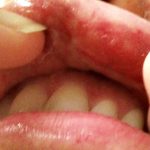Injectable fillers are one of the most popular in-office aesthetic facial treatments. Used primarily to fill nasolabial and marionette lines as well as lips, they provide an instantaneous result. As of today, there are over a dozen commercially-available injectable fillers of various compositions. Patients frequently ask about what is different between them and which is best for them.
From a practical perspective, you can argue that their differences are only… how long do they last and how much do they cost. Since no injectable filler is permanent, they all have a limited time frame of effectiveness. (silicone oil may be permanent but it is not an FDA-approved injectable material for aesthetic use)
But one very important distinction between some of them is their composition…what are they made of? This can be important because there are some potential adverse outcomes that can occur with some of them that is negligible with others. One of the basic concepts that have been pursued over the years to increase the longevity of injectable fillers by using particles, either resorbable or permanent. Because these beads or particles either do not go away or slowly resorb, the injectable filler will last longer. Because of the need for the material to flow through a small needle, the particulate part of the filler usually only makes up less than 30% of the total volume of the filler. The rest is the carrier material, which often is either collagen or some other biocompatible liquid(s).

The particulate fillers include materials such as polymethylmethacrylate, poly-hydroxyethyl methacrylate, hydroxyapatite, and dextran beads. When a foreign body reaction develops from them, it will usually not appear for at least 6 months or even years later. This is due to the ‘frustrated’ phagocytosis that occurs as the macrophages are unable to clear the material. Because of this frustration, the cells become ‘giant’ and a granuloma may develop. Treatment of injectable granulomas may be tried with steroid injections and some may resolve this way or on their own. Persistent ones may require actual incisional drainage or excisional removal.
The choice between shorter vs longer lasting injectable fillers involves more than just cost. Another consideration is the risk of granuloma formation. This is why the particulated fillers should not be injected into the lips where the risk of lumpiness and foreign body reactions is even higher.
Dr. Barry Eppley
Indianapolis, Indiana


